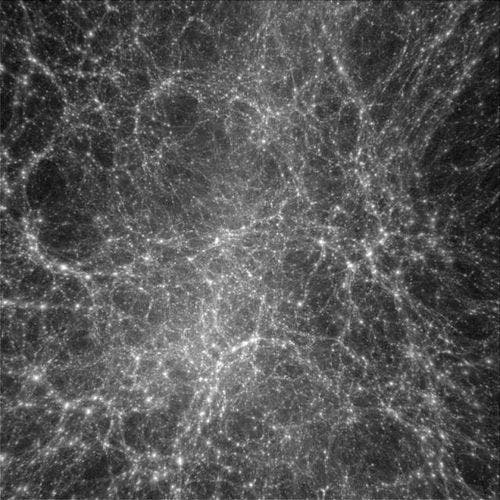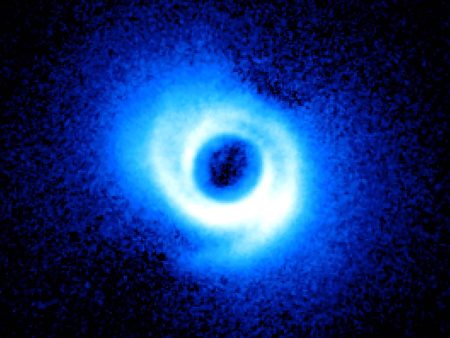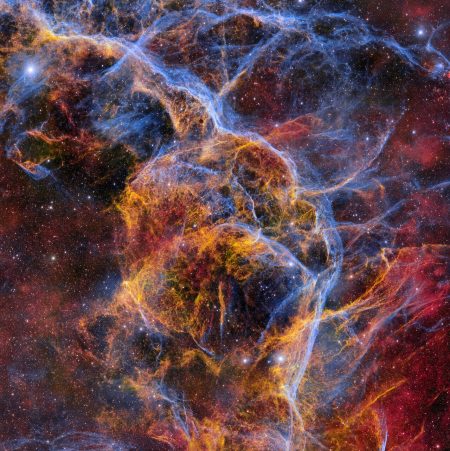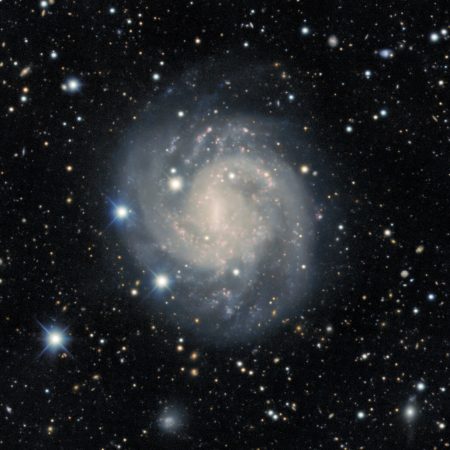New research concludes that instead of edges, galaxies have extremely long outskirts of dark matter that extend up to other galaxies, and thus, the intergalactic space wouldn’t be empty, but filled with dark matter.
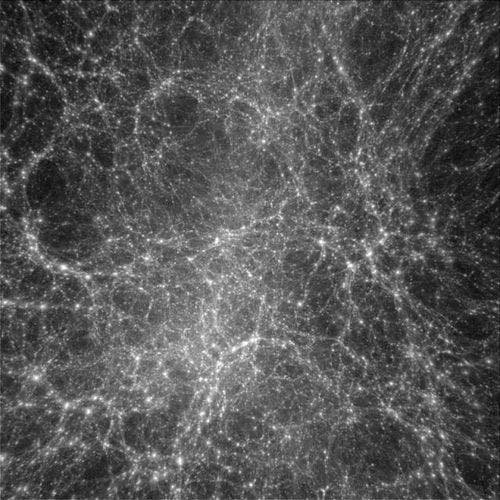
Researchers at the University of Tokyo’s Institute for the Physics and Mathematics of the Universe (IPMU) and Nagoya University used large scale supercomputer simulations, complementing them with recent data of gravitational lensing to reveal how dark matter is distributed around galaxy, in a puzzling clumpy yet ordered manner. Dark matter is believed to amount for about a quarter of all the mass in our Universe.
The picture above was obtained through a computer simulation, showcasing how dark matter is distributed, with the brightest areas being areas almost, but not completely empty.





